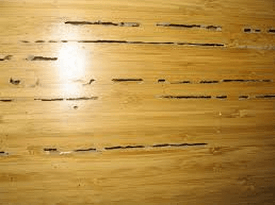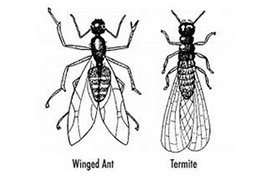Spotting Termites – Are you sharing your home with these tiny troublemakers?
Termites are some homeowners biggest fear, and rightly so! Termites have been known to subtly take down entire sections of a house, costing thousands – and they do it right under our noses.
This is a huge inconvenience, as it can cost us time and money to fix and get everything back to normal. It can also become somewhat of a safety issue if termites are found chewing away at the wooden roofing structure, weakening the roof and making it susceptible to collapsing.
To be able to tell whether your house has termites, there are some things you can look out for.
Damage
Keep an eye out for any damage around the house to identify whether you have termites. This may range from a small hole in the wall, to a few lines like in the picture below, or to complete destruction. Sometimes it can be difficult to see termite activity as they work inside the wood and don’t always expose themselves. A good thing to do is to find a time where your house is quiet and do a little inspecting of your own. Carry around with you something to knock on pieces of timber in your home (a screw driver for example), and listen for hollow sounds. If your wall sounds ripe, you may have termites under the surface!
Traveling termites
Termites will always chew with the grain when attacking the wood in your home as it is easier to break apart the wood, which means if you start to notice long lines of missing or darkened wood, there’s something up. A lot of the time termites will create “mud tunnels”, which are paths for them to travel safely when they can’t burrow into hard materials such as brick or concrete.
Termite damage along the grain of floor boards
Know what they look like
Learn to distinguish between termites and other insects that may be around the house. Worker termites (the kind that carry out the labor and foraging of wood) are a pale white with a touch of yellow to them. Their bodies are much softer than that of an ant, which are darker in colour and have hard exoskeletons.
Termites also differ from ants and similar insects by having straight antennae, rather than the common elbowed antennae. Their bodies are not segmented off like that of an ants. See photo below.
Comparison between an ant and termite. Notice difference in antennae and body shape.
If you notice that termites around your home are carrying wings, this means that the colony of termites that is already present has grown too big for its current inhabitants, and must spread and expand the colony. Winged termites are similar to that of Queen Ants, where they will find a suitable place to set up shop and multiply to create another faction.
Hopefully with these tips you will be a bit more aware of how to distinguish termites and know when they might be around!







